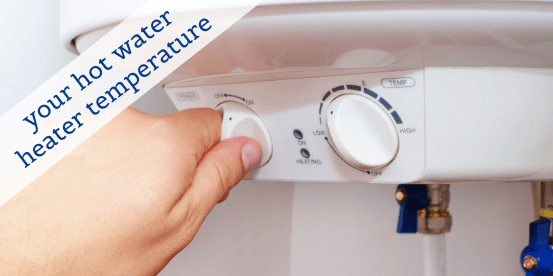Choosing the right temperature for your hot water heater is a delicate balancing act between safety, energy efficiency, and personal comfort. Setting it too low can foster the growth of harmful bacteria, like Legionella, while setting it too high can lead to scalding and increased energy consumption. Finding the optimal temperature ensures a safe and cost-effective supply of hot water for your household needs. Therefore, understanding the implications of different temperature settings is crucial for responsible home maintenance. Let’s explore the recommended settings and factors to consider when deciding what temperature should your hot water heater be set at.
The Recommended Temperature: 120°F (49°C)
Most manufacturers and safety organizations recommend setting your hot water heater to 120°F (49°C). This temperature offers a good compromise for several reasons:
- Scalding Prevention: At 120°F, it takes significantly longer to experience a serious scald compared to higher temperatures.
- Energy Efficiency: Lowering the temperature reduces standby heat loss, which is the energy your water heater uses to maintain the water temperature, even when you’re not using hot water.
- Bacteria Control: While Legionella can survive at 120°F, its growth is significantly slowed, minimizing the risk of contamination.
Factors Affecting Your Hot Water Heater Temperature Choice
While 120°F is a generally recommended setting, several factors might influence your decision to adjust it:
Household Size and Hot Water Demand
Larger households with multiple occupants tend to use more hot water. If you frequently run out of hot water, you might consider slightly increasing the temperature. However, be mindful of the scalding risks.
Presence of Young Children or Elderly Individuals
Young children and elderly individuals are more susceptible to scalding. If you have either in your household, it’s crucial to maintain a lower temperature or install anti-scald devices on your faucets.
Distance from Water Heater to Faucets
If your water heater is located far from your faucets, the water may cool down significantly by the time it reaches the tap. In such cases, a slightly higher temperature setting might be necessary to compensate for the heat loss. However, insulating your hot water pipes is a more effective long-term solution.
Potential Risks of Incorrect Temperature Settings
Setting your hot water heater temperature incorrectly can lead to various problems:
- Scalding: High temperatures can cause severe burns in seconds.
- Increased Energy Costs: Higher temperatures mean more energy consumption.
- Legionella Growth: Low temperatures can encourage the growth of Legionella bacteria.
- Premature Water Heater Failure: Excessively high temperatures can stress the water heater components and shorten its lifespan.
Here’s a comparative table illustrating the relationship between water temperature and scalding time:
| Water Temperature (°F) | Time to Produce a Serious Burn |
|---|---|
| 120 | More than 5 minutes |
| 130 | 30 seconds |
| 140 | 5 seconds |
| 150 | 2 seconds |
| 160 | Less than 1 second |
Ultimately, the decision of what temperature should your hot water heater be set at is a personal one, taking into account all the factors mentioned above. However, prioritising safety and energy efficiency should always be at the forefront of your decision-making process. Monitoring your water heater regularly and adjusting the temperature as needed will ensure a comfortable and safe hot water supply for your household.
ADJUSTING YOUR WATER HEATER TEMPERATURE
Most water heaters have a thermostat dial located on the unit itself, often behind an access panel. Consult your water heater’s manual for the specific location and instructions for adjusting the temperature. Before making any changes, turn off the power to the water heater at the circuit breaker. This is a crucial safety precaution to prevent electric shock. Once the power is off, carefully remove the access panel and locate the thermostat dial. Use a screwdriver to adjust the dial to the desired temperature setting. After making the adjustment, replace the access panel and restore power to the water heater.
TESTING THE WATER TEMPERATURE
After adjusting the thermostat, it’s essential to test the water temperature to ensure it aligns with your desired setting. Run the hot water at a faucet that’s located furthest from the water heater for a few minutes to allow the hot water to reach the tap. Use a thermometer to measure the water temperature. If the temperature is not accurate, repeat the adjustment process until you achieve the desired result. Remember to wait several hours between adjustments to allow the water heater to fully heat the water to the new setting.
MAINTAINING YOUR HOT WATER HEATER FOR OPTIMAL PERFORMANCE
Regular maintenance is key to ensuring your hot water heater operates efficiently and safely. Here are a few essential maintenance tasks:
– Flush the Tank: Sediment can accumulate at the bottom of the tank, reducing its efficiency and lifespan. Flushing the tank annually removes sediment buildup.
– Inspect the Anode Rod: The anode rod protects the tank from corrosion. Check the anode rod every few years and replace it if it’s corroded.
– Insulate the Tank and Pipes: Insulating the tank and pipes reduces heat loss and improves energy efficiency.
– Check for Leaks: Regularly inspect the water heater and surrounding area for any signs of leaks. Address any leaks promptly to prevent water damage.
By understanding the factors that influence hot water heater temperature settings, adjusting the temperature safely, and performing regular maintenance, you can ensure a safe, efficient, and reliable hot water supply for your household. Always prioritize safety and consult a qualified professional if you have any concerns about your water heater’s operation.







